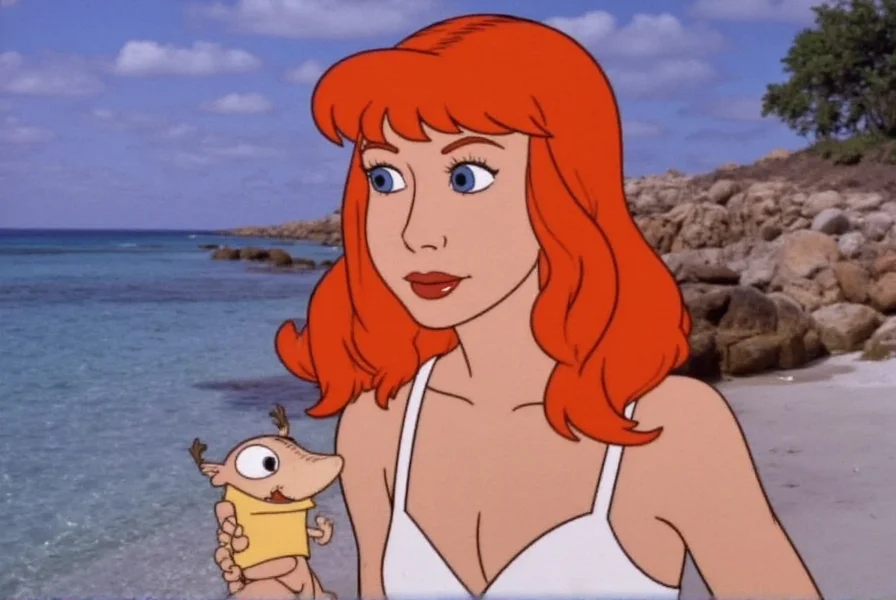Ginger Grant remains one of television's most iconic characters from the golden age of sitcoms. Created by Sherwood Schwartz, Gilligan's Island aired from 1963 to 1967 and followed the misadventures of seven castaways stranded on a deserted Pacific island after a "three-hour tour" gone wrong. Ginger's character provided both comedic relief and a touch of Hollywood glamour to the otherwise rustic island setting.
The Character of Ginger Grant
Within the show's narrative, Ginger Grant was introduced as a famous movie star traveling to a film location when the S.S. Minnow shipwrecked. Her character possessed several distinctive traits that made her memorable:
- Signature flame-red hair (achieved with wigs, as Tina Louise is naturally a brunette)
- Always wearing elegant evening gowns despite the island setting
- Surprising practical skills including chemistry, engineering, and survival techniques
- Frequent references to her Hollywood connections and celebrity acquaintances
Contrary to popular misconception, Ginger never actually appeared in movies within the show's universe. The character's movie star status came entirely from dialogue references rather than visual evidence. This clever writing device allowed the character to maintain her glamorous persona while adapting to island life.
| Character Detail | Fact | Common Misconception |
|---|---|---|
| Profession | Movie star (by backstory) | Actual film appearances shown |
| Hair color | Wigs (Tina Louise is brunette) | Natural red hair |
| Island skills | Chemistry, engineering, survival | Helpless glamour girl |
| Relationship status | Never married on show | Married to Thurston Howell III |
Tina Louise's Portrayal and Legacy
Actress Tina Louise brought Ginger Grant to life with a perfect blend of sophistication and comedic timing. Before Gilligan's Island, Louise had already established herself as a serious actress with roles in films like The Four Horsemen of the Apocalypse (1962) and By Love Possessed (1957). Her casting as Ginger represented a significant shift toward comedic roles.
Interestingly, Tina Louise initially hesitated to accept the role, concerned it might typecast her. After the show's cancellation, she deliberately avoided television roles for many years to distance herself from the Ginger persona. Despite this, her portrayal remains one of the most recognizable in television history.
Cultural Impact and Enduring Popularity
Ginger Grant's character has maintained remarkable cultural relevance for decades after the show's original run. She represents a fascinating study in 1960s gender dynamics—simultaneously embodying traditional femininity while demonstrating unexpected competence. Modern audiences often analyze Ginger's character through contemporary lenses, appreciating her resourcefulness beneath the glamorous exterior.
The "Ginger vs. Mary Ann" debate became one of television's most enduring fan discussions, with viewers passionately choosing sides between the glamorous movie star and the wholesome farm girl. This cultural phenomenon demonstrates how deeply these characters resonated with audiences.
Today, references to Ginger appear across modern media, from The Big Bang Theory to Family Guy, proving the character's lasting influence on pop culture. Costume designers frequently cite Ginger's signature look as inspiration for red-haired characters in subsequent television and film productions.
Common Misconceptions Clarified
Several persistent myths surround Ginger's character that deserve clarification:
- Myth: Ginger appeared in actual movies shown on the series
Fact: No film footage of Ginger ever appeared; her movie career existed only through dialogue - Myth: Ginger's red hair was natural
Fact: Tina Louise wore wigs for the role; she is naturally a brunette - Myth: Ginger was helpless without men
Fact: She frequently demonstrated practical skills, often solving problems the men couldn't
Understanding these distinctions helps appreciate the character's complexity beyond surface-level stereotypes. Ginger Grant represented a nuanced portrayal of femininity during a transformative period in television history.
Ginger's Lasting Television Legacy
The character of Ginger Grant pioneered the "glamorous but capable" archetype that influenced countless female characters in subsequent sitcoms. Her ability to maintain elegance while adapting to primitive conditions created a template for resilient, multifaceted female characters in comedy.
Modern television scholars recognize Ginger as an early example of subverting expectations—using her supposed "helplessness" as a strategic advantage while quietly demonstrating competence. This duality made her simultaneously a product of her time and surprisingly progressive in her resourcefulness.
For fans of classic television, Ginger remains a touchstone of 1960s pop culture. Her distinctive voice, signature look, and memorable one-liners continue to resonate with new generations discovering Gilligan's Island through streaming services and syndication.











 浙公网安备
33010002000092号
浙公网安备
33010002000092号 浙B2-20120091-4
浙B2-20120091-4